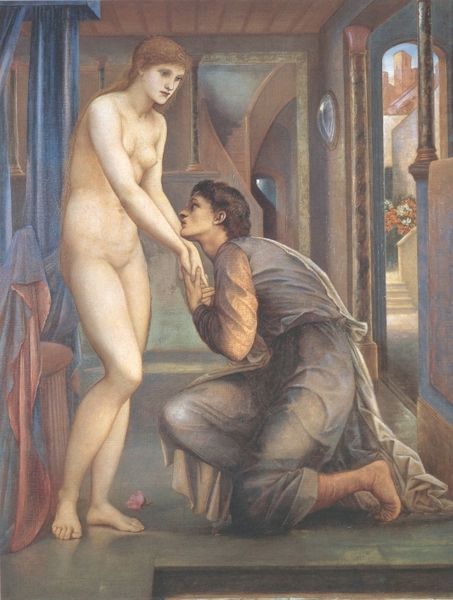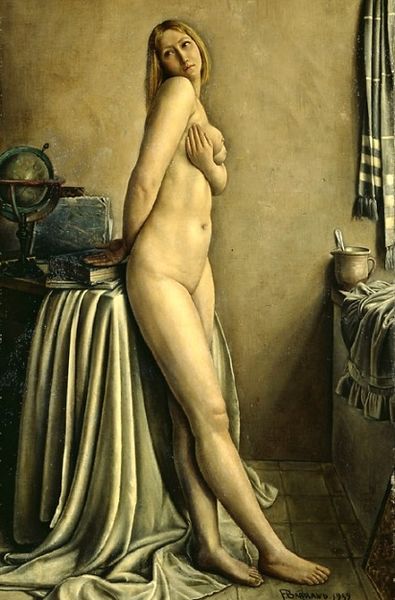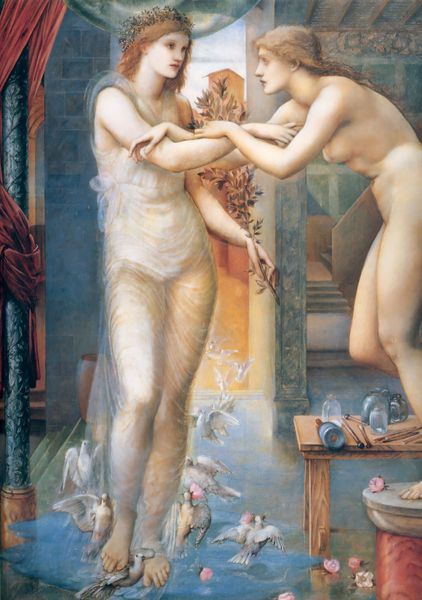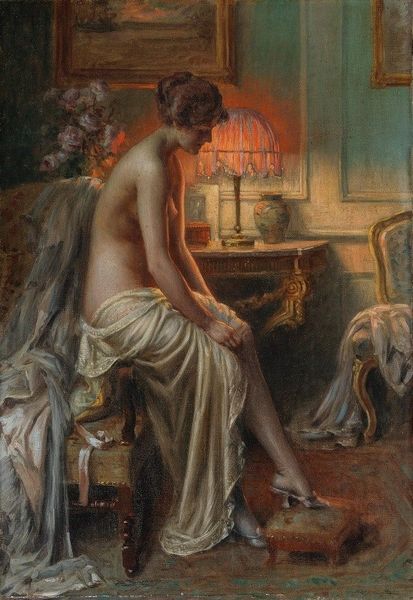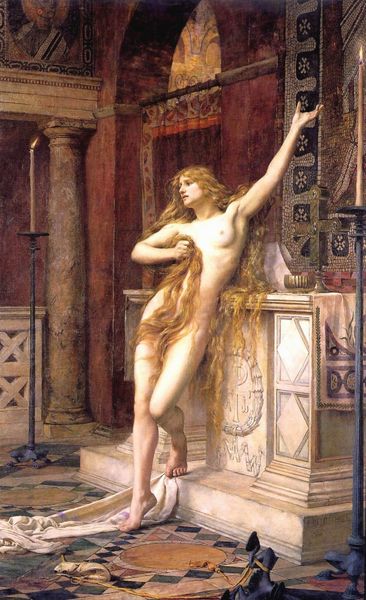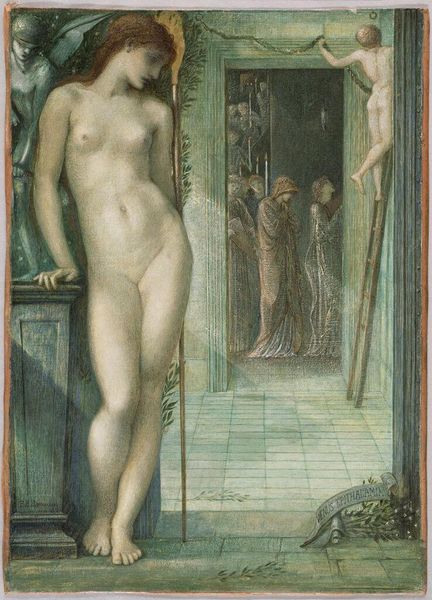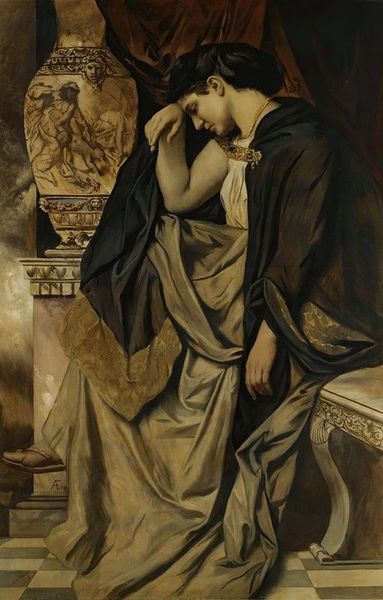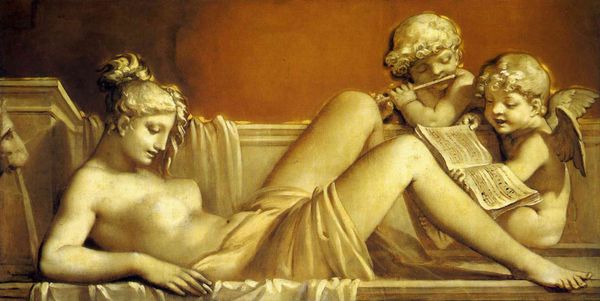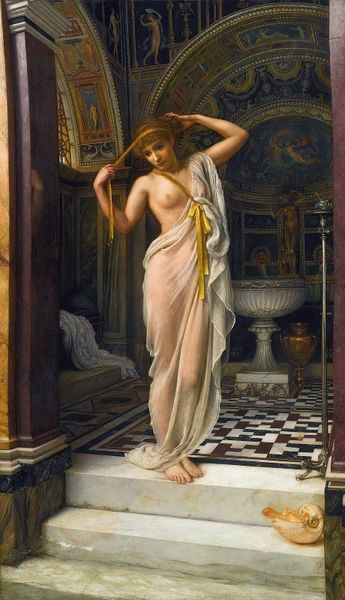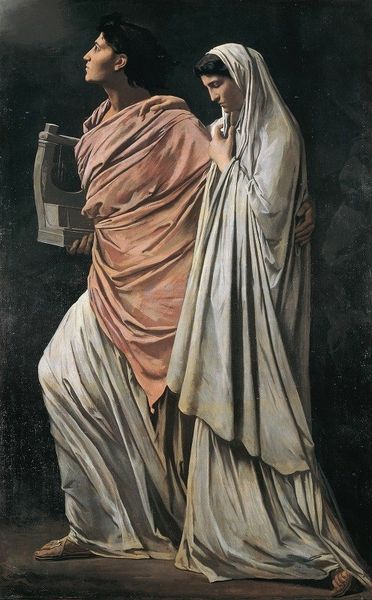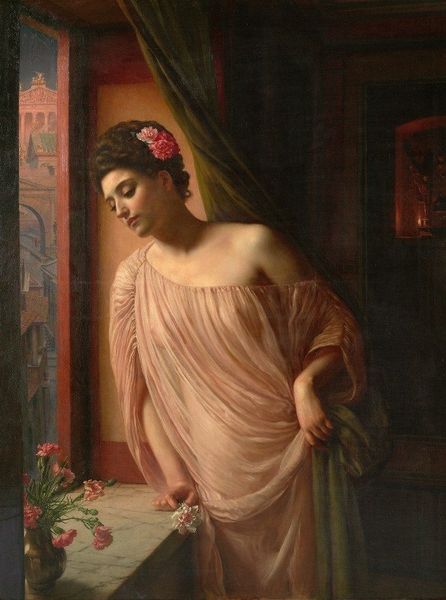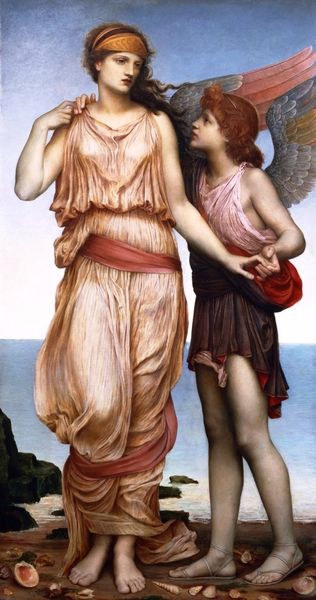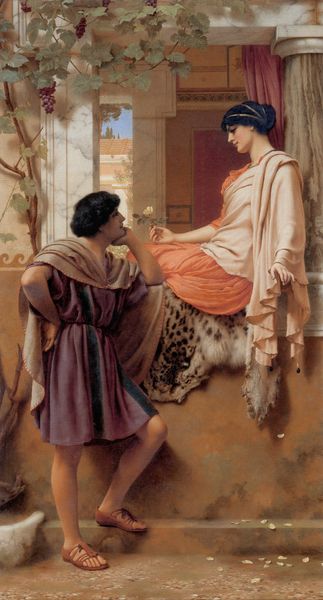
Copyright: Public Domain: Artvee
Curator: Edward Burne-Jones created this artwork titled, "Pygmalion And The Image – The Hand Refrains" in 1878. It is painted in oil. Editor: A rather somber encounter, wouldn’t you say? The color palette is muted, and there is a pervasive sense of hesitation. The sculptor and his creation both seem frozen, almost afraid to connect. Curator: Precisely. Consider the socio-economic conditions. Burne-Jones, aligning with the Pre-Raphaelite Brotherhood, consciously rejected the industrialization and mass production that dominated Victorian England. He turns back to a past of craft, a history when handmade objects carried inherent value, challenging the division between ‘art’ and ‘craft’ upheld by capitalist modes of production. Pygmalion’s painstaking creation, therefore, mirrors the artist’s own dedication to labor-intensive artistry. Editor: But even considering all the conditions of its making, there's more to it than that. It's beautifully rendered, particularly the interplay between the cool marble-like tones of the statue and the warmer flesh tones of Pygmalion himself. Notice the careful composition and use of light to further differentiate the two characters while linking them emotionally through shared glance. Curator: A deliberate juxtaposition, to be sure. But what truly captivates me is the representation of artistic labour. See, Burne-Jones does more than just retell a myth; he reinterprets it, putting an emphasis on artistic creation and the labor behind this piece and what the piece itself is doing to depict manual work and materiality. Editor: And the tension is palatable. I see how the formal structure itself emphasizes their distance, not just emotional but physical as well: between art and life, artist and object. His reluctance feels embedded into every deliberate compositional element. Curator: It begs us to look beyond the myth itself. Pygmalion’s labor, manifested in clay and stone, reminds us of art’s physical presence as commodity, and further it challenges the artist and consumer of art to reconcile creative integrity with the demands of an increasingly industrialized market. Editor: A rather comprehensive encounter, wouldn’t you say? So full of tension that is translated visually through all aspects. The painting's aesthetic properties themselves speak volumes about longing and irresolution. Curator: A productive reading that I feel is anchored in historical and social realities—it truly deepens our understanding and appreciation.
Comments
No comments
Be the first to comment and join the conversation on the ultimate creative platform.
